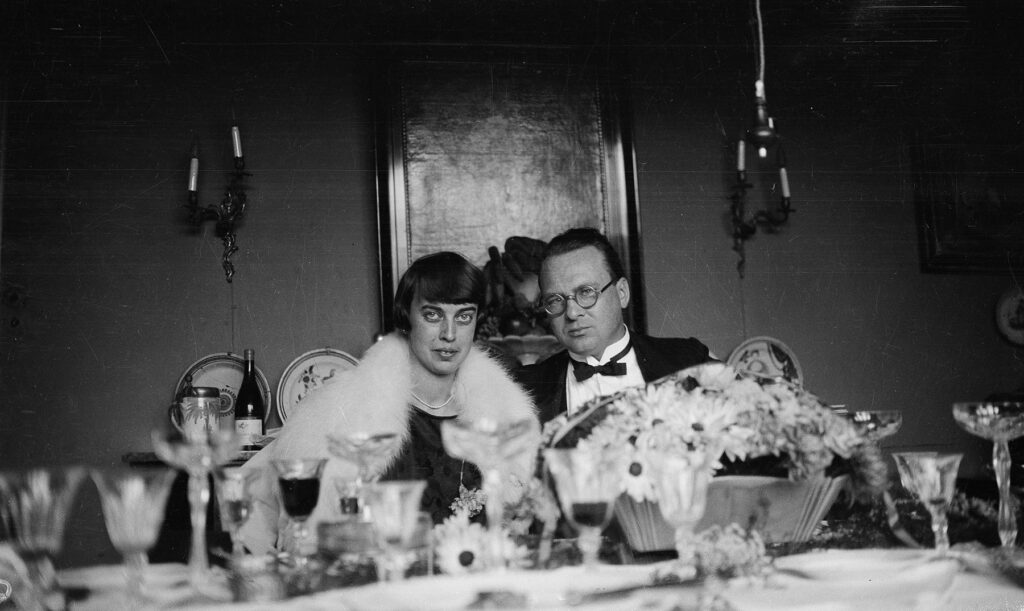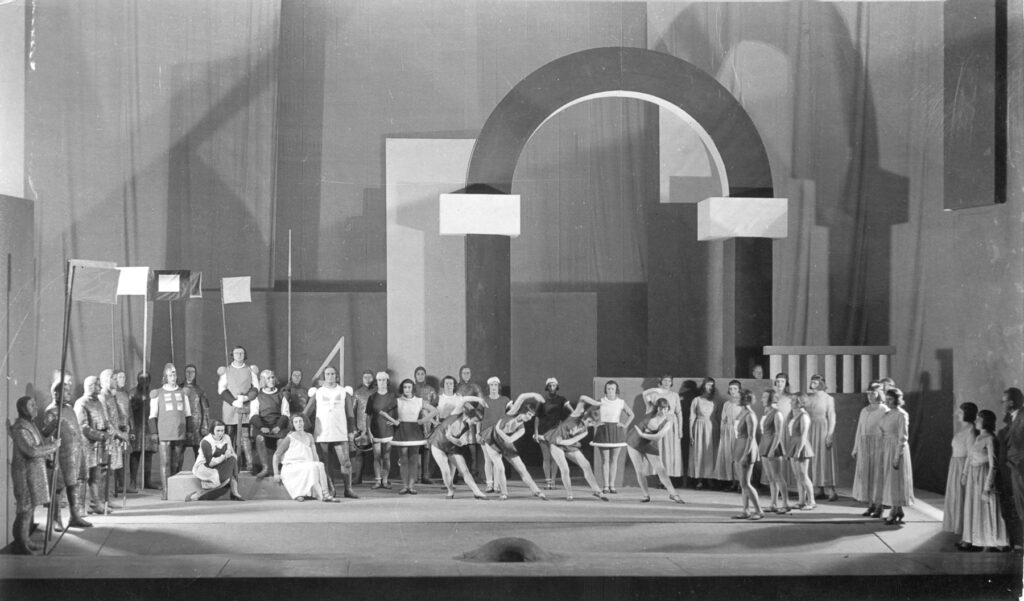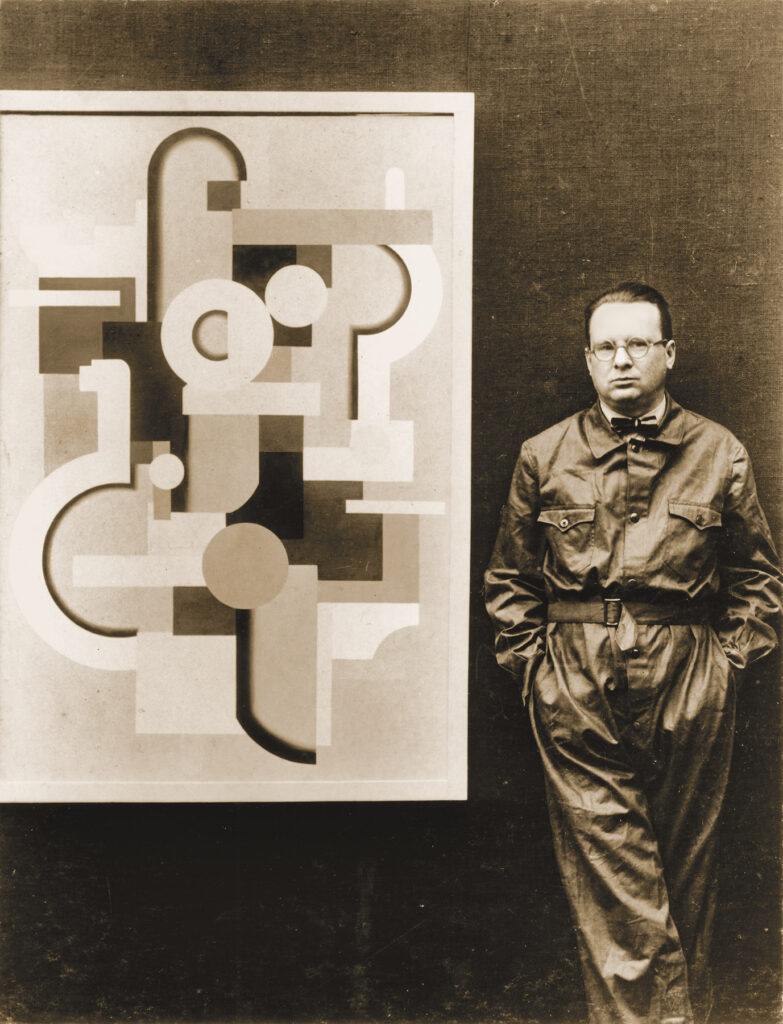After returning from World War I Willi Baumeister completed his studies at the Stuttgart Art Academy in 1920. In 1919 he joined the Berlin artist association “Novembergruppe” (November Group), founded by Max Pechstein among others. In 1919 he founded with Oskar Schlemmer and other artists the “Üecht-Gruppe” (Üecht group) in Stuttgart. During that time he began sketching stage and costume designs for performances at Stuttgart theaters and turned to commercial art in the form of advertising and printed material.
Contacts in France
At this time he also increasingly received public attention. Contacts in France – especially with Fernand Léger (1881–1955), with whom he exhibited in Berlin in 1922, and soon also with Le Corbusier (1887–1965) – made him known outside of Germany’s borders early on.
In 1922 and 1924 he participated in the Stuttgart Werkbund exhibition with his famous Wall Pictures, accompanied by further exhibitions throughout Germany. Beginning in 1919 Baumeister kept a studio in the Untere Anlagen in Stuttgart; in December 1922 he moved into a new one at Stuttgart’s Werastrasse 15.
Marriage
In 1923 Baumeister met the artist Margarete (Margrit) Oehm (1898–1978), who requested critique from him. In 1924 and 1925 Margarete Oehm exhibited twice in Stuttgart, though she abandoned her artistic ambitions after her marriage with Willi on November 20, 1926.
Eventful Years 1924 to 1926
In 1924 Baumeister became acquainted with the architect Heinz Rasch with whom he remained friends throughout his lifetime and who amplified his affinity for architecture (see Wall Pictures). In the same year he traveled to Paris where besides Fernand Léger and Le Corbusier he also met artist Amedée Ozenfant (1886–1966) and art critic Michel Seuphor (1901–1999). Also in 1924 works by Willi Baumeister were shown at a large exhibition of modern German art in Leningrad and Moscow.
In 1924 Baumeister was also called to be a Württemberg Building Advice Center expert for colored house paint and was responsible for the coloration of housing complexes in all of Württemberg.
In 1926 he took the opportunity to participate in an exhibition in New York. He also traveled to Paris again, which led to a large exhibition at the Galérie d’Art Contemporain in 1927. In addition he created the stage design for Georg Friedrich Händel’s opera “Ariodante” for the Landestheater Stuttgart.
On a first Peak in 1927
The marriage with Margarete Oehm and the Paris exhibitions are – after the Wall Pictures – personally and artistically the second major milestones in Baumeister’s life. He was also well received in Berlin in summer 1927 at the “Große Berliner Kunstausstellung” (Great Berlin Art Exhibition) where he had his own space. There he met Kazimir Malevich who exhibited there as well.
As a convinced representative of applied arts, he joined the “ring neue werbegestalter” (Circle of New Commercial Designers) in 1927, to which Kurt Schwitters and other important German typographers belonged. But the most important event for Willi Baumeister – as for the entire European avantgarde – was the extensive 1927 Werkbund exhibition in Stuttgart with the famous Weißenhofsiedlung (Weissenhof Estate). Here he not only designed numerous printed materials and booths, but also furnished a number of rooms with his works.
Because of these activities and successes Willi Baumeister was called to the Municipal School of Applied Arts (Städelschule) in Frankfurt am Main, where he held a professorship from 1928 to 1933.
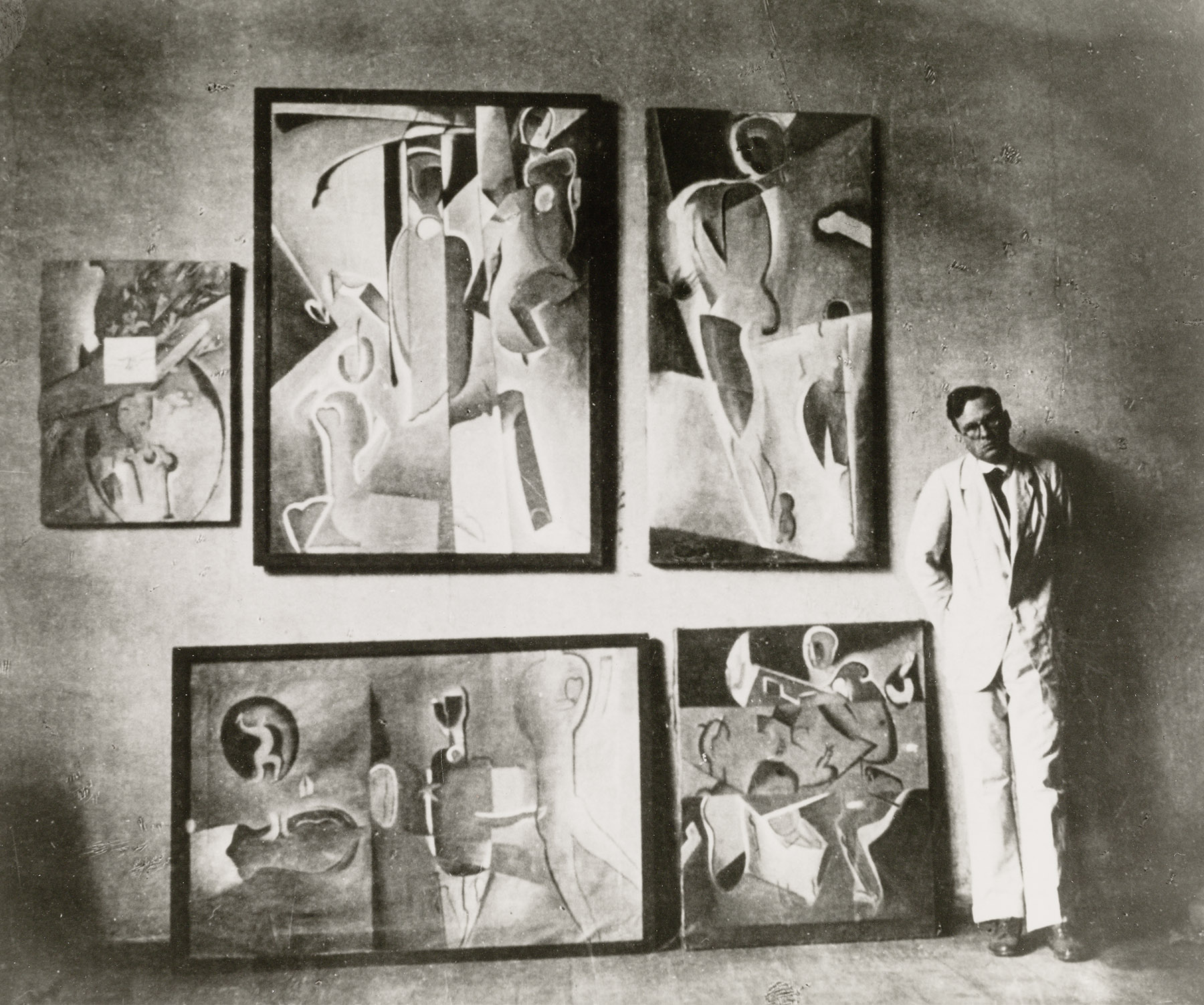
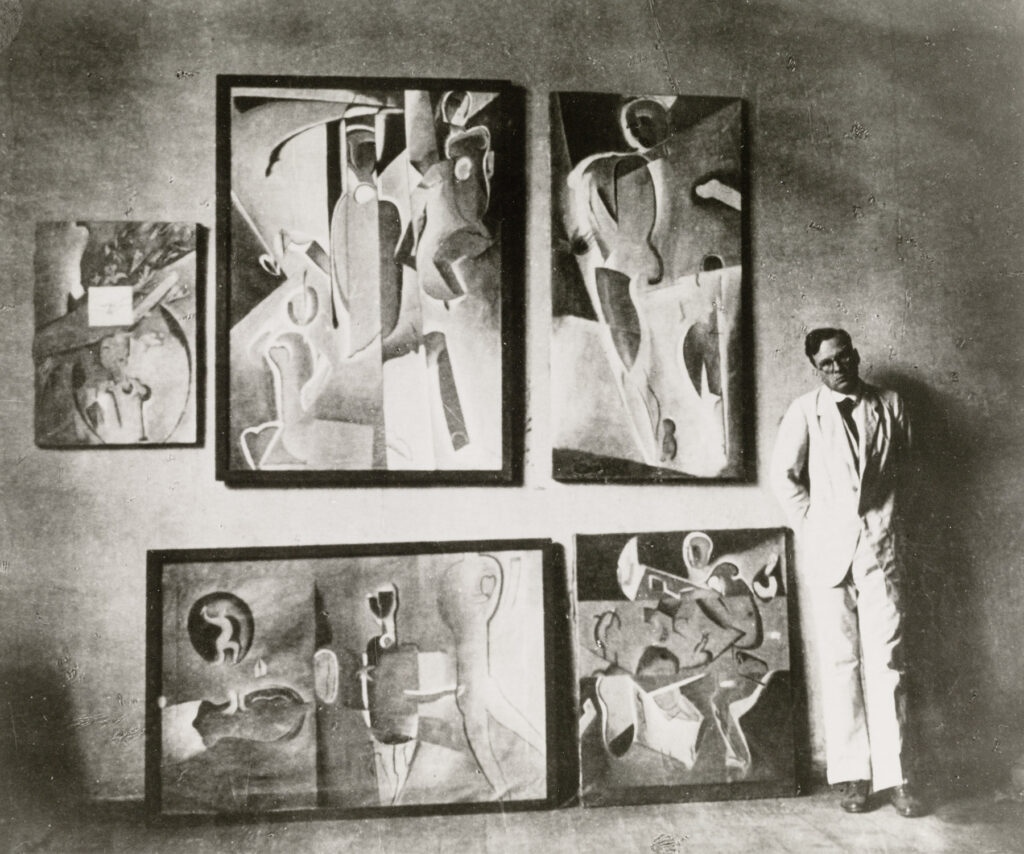
![Photo: black and white: Waldraff, Max Ackermann, Bertel Schleicher, Herburger, Swarth [or Kandinsky], Prampolini, Willi Baumeister, Ida Hackmüller-Thal, Rovelli Sotja, Zlatko Neumann, Adolf Loos, Piet Mondrian and Michel Seuphor, France, Paris, Montparnasse, behind Café du Dôme, 1926.](https://willi-baumeister.org/content/uploads/fotos/jpeg_ab_f_009/ab-f-009-063-1024x725.jpg)
